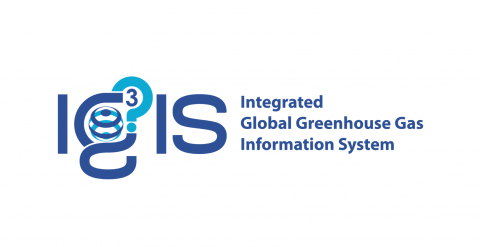The implementation of the Paris Agreement will require countries and sub-national entities to take actions to reduce emissions of greenhouse gases in an optimal way. To assist the countries in meeting their commitments the World Meteorological Organization (WMO) and its partners have initiated the development of an Integrated Global Greenhouse Gas Information System (IG3IS). IG3IS looks to serve users (decision-makers) who are able and willing to take actions to reduce emissions of greenhouse gases and pollutants that reduce air quality. This service is based on existing and successful methods and use-cases for which the scientific and technical skill is proven or emerging.
The Science Implementation Plan presents the suite of the technical solutions that are available to address articulated user needs on different scales (from national to facility). It also paves the way for the development of future solutions where additional research is required. This document presents the main principles of the IG3IS Science Implementation Plan. The choice of the objective to be implemented has to be made by the countries or sub-national implementation bodies/practitioners. For each individual objective, the plan presents the available and proven tools based on measurements and model analyses. It summarizes key elements required to implement individual solutions. The plan describes the approach to the modelling coordination activities to ensure harmonized and quality assured global implementation and compatibility of the products delivered on different scales.
The measure of success of the IG3IS implementation is the use of the provided information for valuable and additional emission reduction actions, building user confidence and practitioner skills in the value of atmospheric composition measurements as an essential part of the climate change mitigation and pollution remediation tool kits. The IG3IS team defined four implementation objectives:
1) improve knowledge of national emissions (including reduction of uncertainties of inventory reporting to the United Nations Framework Convention on Climate Change (UNFCCC));
2) locate and quantify previously unknown emission reduction opportunities such as fugitive methane emissions from industrial sources;
3) provide sub-national entities such as large urban source regions (for example, megacities) with timely and quantified information on the amounts, trends and attribution by sector of their greenhouse gas (GHG) emissions to evaluate and guide progress towards emission reduction goals; and
4) support for the Paris Agreement’s global stocktake through the integration of these objectives. This Science Implementation Plan documents the “good-practice” methodological guidelines for how atmospheric measurements and analysis methods can deliver valuable information under each objective area.
This plan and the team that prepared it, will serve to guide WMO Members and their partners in the definition and implementation of new IG3IS projects that apply and advance these “good-practice” capabilities. The plan will evolve overtime to respond to new policy challenges and to capture emerging capabilities. Successful application of IG3IS methods depends on intimate dialogue between scientists and users in order to ensure that user requirements are met, and so that users are introduced to previously unknown capabilities that may drive them to address challenges in new ways. IG3IS takes a highly collaborative “Translation Atmospheric Sciences” approach to deliver science-based services to potential stakeholders/users and is well in line with the implementation plan of the Global Atmosphere Watch (GAW) Programme. The plan directly supports implementation of the WMO Strategic Plan for 2020-2023, Objective 3.2 “Advance policy-relevant science”.

IG3IS is an observation-based information system for determining trends and distributions of greenhouse gases (GHGs) in the atmosphere and the ways in which they are consistent or not with efforts to reduce GHG emissions. This is being done already on a global scale through existing networks, but currently provides only a modicum of useful information at the spatial scale of nations and regions managing emissions and offsets.
